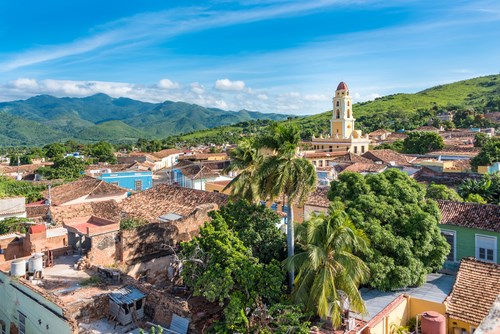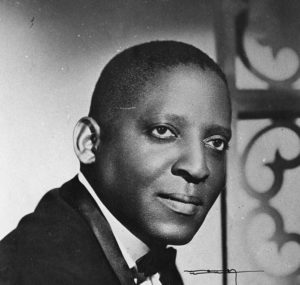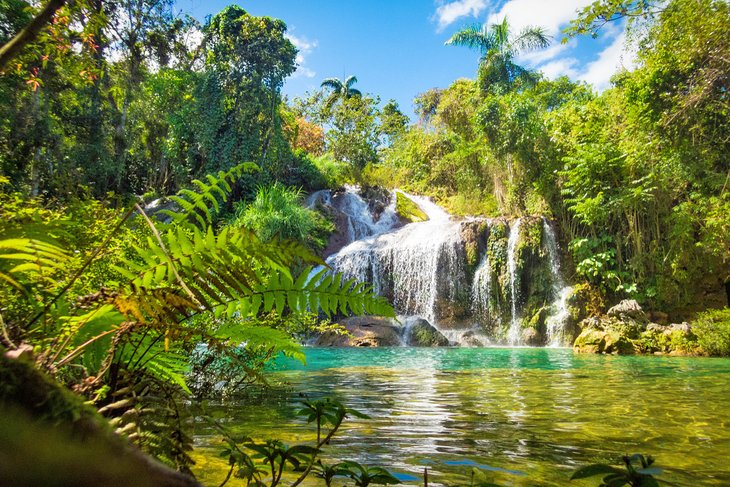BARBARO DIEZ JUNCO, un extraordinario cantante de amplias facultades vocales, con una magnifica voz de tenor; no tuvo una formación musical académica, no tocaba ningún instrumento, pero su inigualable voz y sus interpretaciones musicales lo convirtieron en ídolo público, su voz inmortalizó páginas musicales como ‘Martha’ del compositor Moisés Simons, ‘Lágrimas Negras’, ‘Olvido’, ‘Juramento’, ‘El que Siembra su Maíz’ de Miguel Matamoros, entre otros.
Nacido en el poblado de Bolondrón, Matanzas, 4 de diciembre de 1909, exactamente en un central azucarero ya demolido que se llamó San Rafael de Jorrín, da a luz Salustiana del Junco y de la Mercedes a Bárbaro Diez Junco quien, con el decursar del tiempo se convirtiera en “El Príncipe del Danzón”. A los 4 años junto a su familia, se traslada, al entonces central Manatí Sugar Company, actualmente en proceso de demolición en el Municipio Manatí, provincia de Las Tunas, donde su padre, Eugenio Diez trabajaba como obrero. Comenzó sus primeros estudios en la escuelita del Batey. Aquí es precisamente donde comienza a cantar en los actos culturales, su maestra es quien descubre su voz y talento musical y lo hacía guiar el coro de la escuela en los actos públicos.
Trabajó como mecánico en el central y en el año 1930 se traslada definitivamente para La Habana donde comienza a cantar en trío de Graciano Gómez e Isaac Oviedo, contando con solo 21 años comenzó una carrera artística en la cual alternó con la Orquesta Danzonera de Antonio María Romeu, con la cual se dio a conocer. Barbarito no fue ni Sastre ni mecánico como deseaban algunos miembros de su familia. Sus caminos eran otros. Cuando llegó desde oriente a la capital, tuvo que abrirse paso para sobrevivir a la crisis político económica existente en el país durante la década del 30.
VIDEOS- Barbarito canta “Lagrimas Negras”..
CARRERA ARTISTICA…
De su coincidencia con el trovador Graciano Gómez, Isaac Oviedo tercero maravilloso que iba del son a la trova, nacieron “Los Gracianos” este trío se nutrió de lo más valeroso de nuestras tradiciones e incorporó genuinas raíces: La trova Tradicional y su gama de Habaneras, Boleros, Guarachas, Sones, y Criollas. Por lo general actuaban en la peña del Café “Vista Alegre” entonces ubicado en San Lázaro y Belascoaín, donde ya Barbarito mostraba la elegancia que lo caracterizó durante más de cinco decenios de vida artística. Sobre el referido lugar Eduardo Robreño, teatrista y periodista, ofrece una valoración en su libro “Cualquier Tiempo Pasado Fue”… “no sería aventurado decir que medio centenar de las más gustadas melodías de nuestro cancionero popular surgieron o se esbozaron allí y es que el Vista Alegre fue centro perenne de reunión de los mejores cultores de la trova. De velada en velada y de baile en baile por toda Cuba y Latinoamérica anduvo Barbarito. Deleitó a varias generaciones con obras de Ernesto Lecuona, Moisés Simons, Eliseo Grenet, Pedro Flores, Rafael Hernández y otros destacados compositores al abrigo de guitarras, pianos y tambores, Barbarito desplegó su virtuosismo y encanto singular, porte erguido, sereno de Palma Real.
En su carrera de más de 58 años grabó gran número de discos de larga duración que contenían obras que enriquecen el repertorio musical cubano. Viajó a varios paises de América Latina, Europa y a Estados Unidos, realizó programas en Cabaret, Teatros, Bailes, la Radio y la TV. Por su dedicación al desarrollo del arte nacional, su fecunda labor en aras del enriquecimiento cultural de nuestro pueblo le fueron impuestas medallas, órdenes y distinciones. Jamás aprendió los fundamentos teóricos del arte musical, pero demostró ser uno de los más afinados y consecuentes del Danzón, un género que como ritmo permanece hasta en la misma Salsa a pesar de contar con más de 100 años de creado. Su voz única e irrepetible se escuchó en México, Venezuela, República Dominicana y Panamá entre otros escenarios del mundo logrando a lo largo de su fructífera carrera, que lo hicieran merecer los titulos de: “La Voz de Oro del Danzón” o “El Príncipe del Danzón”.
Sin proponérselo tejía una leyenda inscrita en la buena música sin límites de fronteras. El pueblo comenzó a llamarlo La Voz del Danzón sobre todo por su apego al género, siempre rehuyó el cambia cambia tan socorrido por los vocalistas y agrupaciones. Así fue de especial con el Danzón.
Contó con el maestro Antonio María Romeu, quién además de introducir el piano en su orquesta para interpretar danzones, tenía un modo peculiar de tocar ese instrumento. Impresionaba con su estilo, técnica y escalas inigualables. En tanto que la voz por excelencia de “Tres Lindas Cubanas” y de otras páginas antológicas aportó bríos mesurados y originales a la forma danzaria y cantable reconocida como nuestro baile nacional. Por eso resulta difícil mencionar a la Orquesta de Antonio María Romeu sin añadir, a su cantante Barbarito Diez. Buena parte de la amplia discografía que enriquece el acerbo musical cubano le pertenece. Pudo ampliarla en Venezuela donde descolló como uno de los intérpretes más populares de la década del 80 tras grabar con la agrupación de cuerdas La Rondalla Venezolana que dirige Luis Arismendi.
VENEZUELA AMPLIÓ SU POPULARIDAD…
En la prensa del país sudamericano varios musicólogos reconocieron en fechas recientes que Barbarito Diez fue en su momento irrepetible en la música caribeña. Su nombre quedará inscripto en el pentagrama mundial de la música popular. Esta distinción se repite en otros lugares, donde la voz melodiosa que recreó como ninguna otra, Idilio, Ojos Malvados, Junto al Palmar del Bajío y La Rosa Roja, ameniza la fiesta entre amigos. No asombra la encurrencia, y mucho menos que Alfredo Sadel y Simón Díaz, músicos Venezolanos amigos de Cuba, lo definieran como una de las grandes voces de América Latina. “Entregaba en cada interpretación por encima de todos sus logros formales(méritos y rítmicos) una atmósfera auténtica, sangre de su vida”, comentó Díaz. Esta proyección trascendió a otros géneros. En el Cha Cha Chá reconoció Barbarito “una magnifica modalidad del Danzón que ha prendido en el corazón del cubano. lo acepto como algo nuestro al igual que al Danzón. Ambas ramificaciones saben a son cubano”
Realizó giras artísticas a Puerto Rico, 1933, con el Septeto Matancero; 1935, Santo Domingo, República Dominicana, con su orquesta dirigia por Armando Valdespí; 1959, a Nueva York, con Fajardo y sus Estrellas, con la que se presentó en el teatro de Puerto Rico y en el Palladium; 1960, Miami; 1980, Venezuela, se presentó en el Poliedro, y en el Super Show del Recuerdo; 1982, Venezuela, con la Orquesta Aragón, Conjunto Musical Son 14 y el Trabuco Venezolano; 1984, Venezuela, donde actuó con su orquesta en el salon Nauguatá del Hotel Tamanco; 1985, Venezuela, actúa en el Ateneo de Caracas con Pablo Milanés; 1981, México, acompañado por la orquesta de Guillermo Rubalcaba; 1985, México.
HOMENAJES A BARBARITO DIEZ…
Hay que señalar que aunque gran parte de su vida transcurrió en Manatí, donde cada año se le rinde homenaje en la fecha de su natalicio, Barbarito Diez manifestó siempre que había nacido en Bolondrón y en 1979, en el marco de la II Semana Municipal de Cultura, se le ofreció un homenaje en dicha localidad. En 1999, al celebrarse el 90 aniversario de su nacimiento, el Museo Municipal le dedicó una Muestra.
Fue en la Habana, el 6 de mayo de 1995 cuando al fallecer cumpliría ya 86 años el 4 de diciembre, contaba con las distinciones “Por la Cultura Nacional” y “Raúl Gómez García”, además de la medalla “Alejo Carpentier” y la Orden “Félix Varela” de Primer Grado”, entre muchos galardones, reconocimientos y trofeos. Toda una vida por su firme calidad entroncó con lo mejor de nuestra tradición musical.
Barbarito Diez Junco siempre estará entre nosotros, como un gigante del pentagrama de su majestuosa figura, que cual Palma Real se yergue en el Centro de la Cultura Nacional y en el corazón de nuestro pueblo que permanentemente le rinde Homenaje. Era sencillo, modesto, de una profunda naturalidad, comentan vecinos y amigos.
A Barbarito Diez lo envolvía esa magia que crea una virtud estética en la creación artística tipifica la expresividad del individuo creador en el arte cubano. En honor a la memoria de Barbarito Diez, el municipio de Manatí construyó un monumento el cual esta situado en el parque José Martí Pérez de dicho territorio, además de una casa para su descanso que actualmente es la Casa de la Música “Barbarito Diez”.
BARBARITO DIEZ, KNOWN AS “THE PRINCE OF THE DANZON” AND “THE VOICE OF THE DANZON”. VIDEOS
Barbaro Diez Junco, an extraordinary singer with extensive vocal faculties, with a magnificent tenor voice, did not have academic musical training, he did not play any instrument, but his unique voice and his musical performances made him a public idol, and his voice immortalized musical pages such as ‘Martha’ by composer Moisés Simons, ‘Lágrimas Negras’, ‘Olvido’, ‘Juramento’, ‘El Que Siembra Su Maíz’ by Miguel Matamoros, among others.
Born in the town of Bolondrón, Matanzas, on December 4, 1909, exactly in a demolished sugar mill called San Rafael de Jorrín, Salustiana del Junco y de la Mercedes gave birth to Bárbaro Diez Junco who, with the passing of the time became “The Prince of Danzón”. At the age of 4, together with his family, he moved to the then central Manatí Sugar Company, currently in the process of being demolished in the Manatí Municipality, province of Las Tunas, where his father, Eugenio Diez, worked as a laborer. He began his first studies at the Batey school. This is precisely where he begins to sing in cultural events, his teacher is the one who discovers his voice and musical talent and made him lead the school choir in public events.
He worked as a mechanic at the mill and in 1930 he moved permanently to Havana where he began to sing in a trio with Graciano Gómez and Isaac Oviedo. At the age of only 21, he began an artistic career in which he alternated with the Antonio María Danzonera Orchestra. Romeu, with which he became known. Barbarito was neither a tailor nor a mechanic as some members of his family wanted him to be. His ways were others. When he arrived from the east to the capital, he had to make his way to survive the political and economic crisis that existed in the country during the 1930s.
VDEOS- Barbarito Diez sings “Lagrimas Negras”…
ARTISTIC CAREER…
From his coincidence with the troubadour Graciano Gómez, Isaac Oviedo, the wonderful third who went from son to trova, “Los Gracianos” was born, this trio was nourished by the most courageous of our traditions and incorporated genuine roots: Traditional Trova and its range of Habaneras, Boleros, Guarachas, Sones, and Creoles. They usually performed at the “Vista Alegre” Café rock, then located in San Lázaro and Belascoaín, where Barbarito already showed the elegance that characterized him for more than five decades of artistic life. Eduardo Robreño, playwright and journalist, offers an assessment of the aforementioned place in his book “Any Past Time Was”… “It would not be risky to say that fifty of the most popular melodies of our popular songbook arose or were outlined there and it is that the Vista Alegre was a perennial gathering place for the best trova singers. From evening to evening and from dance to dance all over Cuba and Latin America, Barbarito walked. He delighted several generations with works by Ernesto Lecuona, Moisés Simons, Eliseo Grenet, Pedro Flores, Rafael Hernández, and other outstanding composers sheltered by guitars, pianos, and drums, Barbarito displayed his virtuosity and singular charm, the upright, serene demeanor of Palma Real.
In his career of more than 58 years, he recorded a large number of long-playing records containing works that enrich the Cuban musical repertoire. He traveled to various countries in Latin America, Europe, and the United States, and performed programs in Cabaret, Theaters, Dances, Radio, and TV. For his dedication to the development of national art, his fruitful work for the sake of the cultural enrichment of our people, medals, orders, and distinctions was imposed on him. He never learned the theoretical foundations of musical art, but he proved to be one of the most refined and consistent in Danzón, a genre that as a rhythm remains even in Salsa itself despite having been created for more than 100 years. His unique and unrepeatable voice was heard in Mexico, Venezuela, the Dominican Republic, and Panama, among other world stages, achieving throughout his fruitful career, which made him deserve the titles of: “The Golden Voice of Danzón” or “The Prince of the Danzon”.
Without intending it, he weaved a legend inscribed in good music without borders. The town began to call him La Voz del Danzón, above all because of his attachment to the genre, he always shunned the change that is so helped by vocalists and groups. That was how special it was with the Danzón.
It featured maestro Antonio María Romeu, who, in addition to introducing the piano to his orchestra to perform danzones, had a peculiar way of playing that instrument. He was impressed with his unique style, technique, and scales. While the quintessential voice of “Tres Lindas Cubanas” and other anthological pages contributed measured and original energy to the dance and singing form recognized as our national dance. That is why it is difficult to mention the Antonio María Romeu Orchestra without adding its singer, Barbarito Diez. Much of the extensive discography that enriches the Cuban musical heritage belongs to him. He was able to expand it in Venezuela where he stood out as one of the most popular performers of the 1980s after recording with the string group La Rondalla Venezolana directed by Luis Arismendi.
VENEZUELA EXPANDED ITS POPULARITY…
In the press of the South American country, several musicologists recently recognized that Barbarito Diez was once unrepeatable in Caribbean music. His name will be inscribed on the world pentagram of popular music. This distinction is repeated in other places, where the melodious voice that he recreated like no other, Idilio, Ojos Malvados, Junto al Palmar del Bajío, and La Rosa Roja, livens up the party among friends. The turnout is not surprising, much less that Alfredo Sadel and Simón Díaz, Venezuelan musicians friends of Cuba, defined him as one of the great voices of Latin America. “He delivered in each interpretation above all the formal achievements (his merits and rhythms) an authentic atmosphere, blood of his life”, commented Díaz. This projection transcended other genres. In the Cha Cha Chá Barbarito recognized “a magnificent modality of the Danzón that has caught on in the heart of the Cuban. I accept it as something of ours as well as the Danzón. Both branches taste like Cuban son”
He made artistic tours to Puerto Rico, 1933, with the Septeto Matancero; 1935, Santo Domingo, Dominican Republic, with his orchestra conducted by Armando Valdespí; 1959, to New York, with Fajardo and his Stars, with whom he appeared at the theater in Puerto Rico and at the Palladium; 1960, Miami; 1980, Venezuela, he appeared at the Poliedro, and at the Super Show del Recuerdo; 1982, Venezuela, with the Orquesta Aragón, Musical Ensemble Son 14 and the Trabuco Venezolano; 1984, Venezuela, where he performed with his orchestra in the Nauguatá room of the Hotel Tamanco; 1985, Venezuela, performs at the Ateneo de Caracas with Pablo Milanés; 1981, Mexico, accompanied by the Guillermo Rubalcaba orchestra; 1985, Mexico.
TRIBUTES TO BARBARITO DIEZ…
It should be noted that although a large part of his life was spent in Manatí, where homage is paid to him every year on the date of his birth, Barbarito Diez always stated that he had been born in Bolondrón, and in 1979, within the framework of the II Municipal Week of Culture, he was offered a tribute in that town. In 1999, to celebrate the 90th anniversary of his birth, the Municipal Museum dedicated an exhibition to him.
It was in Havana, on May 6, 1995, when he would have turned 86 when he died on December 4, he had the distinctions “For National Culture” and “Raúl Gómez García”, in addition to the “Alejo Carpentier” medal and the Order “Félix Varela” of First Degree”, among many awards, recognitions, and trophies. A lifetime for its firm quality connected with the best of our musical tradition.
Barbarito Diez Junco will always be among us, like a giant of the pentagram of his majestic figure, which, like a Royal Palm, stands in the Center of National Culture and in the heart of our people that permanently pays homage to him. He was simple, modest, and deeply natural, neighbors and friends commented.
Barbarito Diez was enveloped by that magic that creates an aesthetic virtue in artistic creation, typifying the expressiveness of the creative individual in Cuban art. In honor of the memory of Barbarito Diez, the municipality of Manatí built a monument which is located in the José Martí Pérez park of said territory, in addition to a house for his rest that is currently the House of Music “Barbarito Diez”
Agencies/ Wiki/ Ecured/ BarbaroDiezBio./ Extractos/ Excerpts/ Internet Photos/ YouTube/ Arnoldo Varona/ www.TheCubanHistory.com
THE CUBAN HISTORY, HOLLYWOOD.









